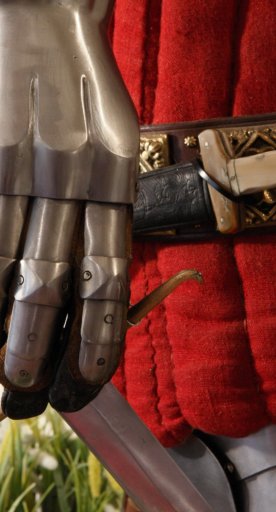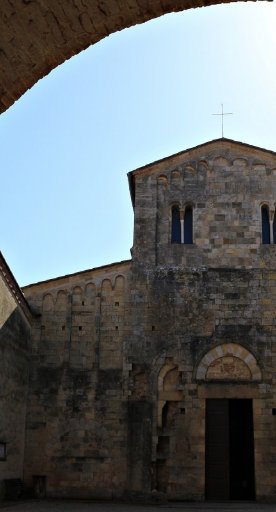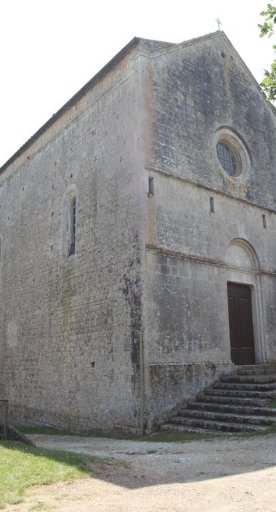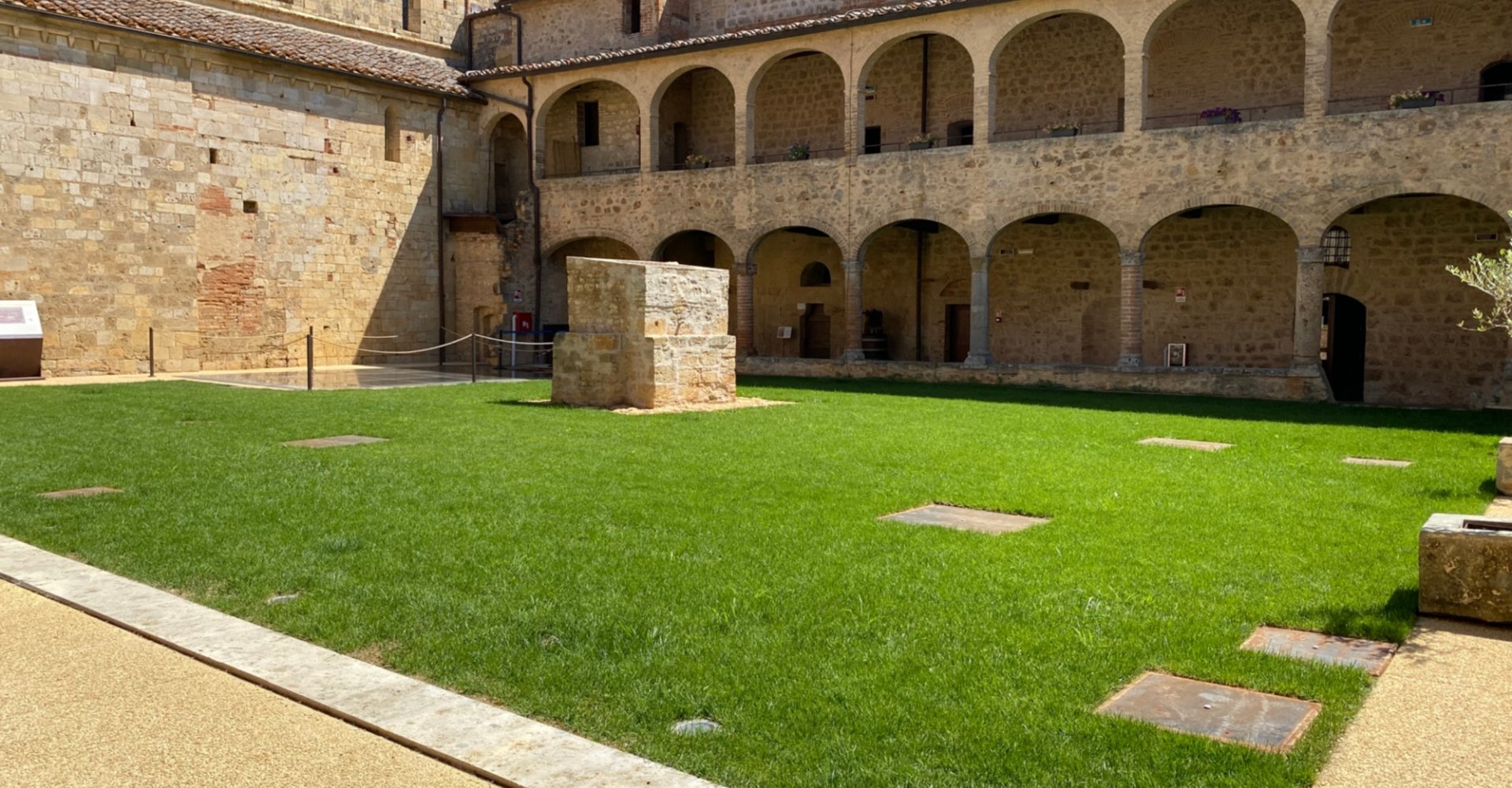
M.A.M. – Archeology Museum of Monteriggioni
Ad Abbadia a Isola, un percorso nella storia di Monteriggioni
Inaugurated in July 2023, the M.A.M. (Archeological Museum of Monteriggioni) is an itinerary à rebours through the history of Monteriggioni from the Middle Ages to Protohistory, with constant reference to the territorial sphere of Val d’Elsa.
The route unfolds between the exterior and interior of the Monumental Complex of Abbadia a Isola, which has recently been restored and explained with special panels framing its historical events, as well as illustrating the low medieval burial ground (visible) identified here by excavations.
Access is through the rooms of the Tinaia (the room used for wine production), which introduce both the Cloister and the rooms on the upper floor; in the three rooms, in succession, it is possible to retrace the history of the abbey and its cloister, as well as to see the reconstruction of a member of the Franzesi family (the last lords of Staggia influential on Abbadia a Isola) buried with her jewels in the cloister itself.
In the “Sigerico” Hall, the display continues from the Roman Age to Protohistory, with a prominent place given to the tomb of the Calisna Śepu, from the Casone necropolis, found in 1893 in Malacena small farm. This section also features the facial reconstruction of the so-called “Chiostraccio Man”; this is a skeleton found in 1962, initially dated to over 15,000 years ago. Today, thanks to new analyses (carbon-14 and DNA), it has been possible to establish that he lived in Etruscan times.
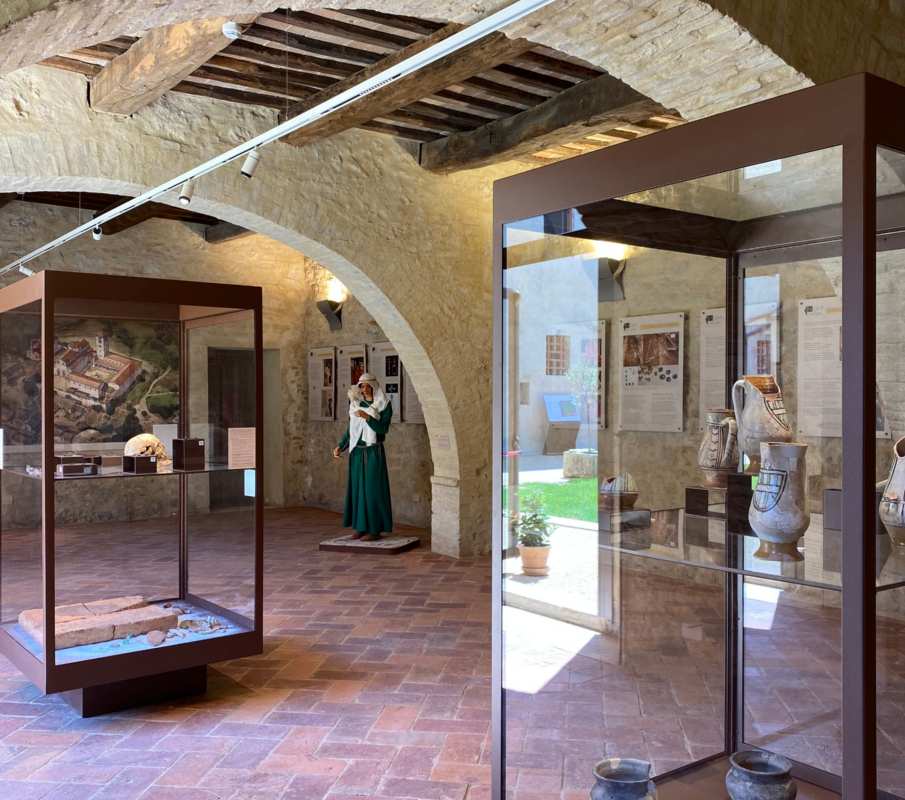
On the other hand, the small settlement of Campassini (late Iron Age), organized around a reservoir that, over time, became the focus of the settlement’s development, is connected to the formation period of the territory linked to the proto-urban center of Volterra. In addition to materials recovered during excavations, there are two plastic models with reconstructions of the hut and the pottery kiln active here.
Lastly, touch screen totems offer in-depth videos and 3D reconstructions of the non-exhibited artifacts.
